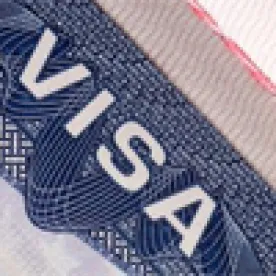On Nov. 18, 2016, the Department of Homeland Security (“DHS”) published its final rule to “modernize and improve” employment-based non-immigrant and immigrant visa programs. As stated by DHS, the primary purpose of the improvements is to enhance the ability of U.S. employers to hire and retain specific foreign national employees who are the beneficiaries of approved employment-based immigrant visa petitions. The improved rule puts in writing many DHS policies and practices that DHS has established in response to certain provisions of the American Competitiveness and Workforce Improvement Act of 1998. The final rule is effective on Jan. 17, 2017.
Key improvements, and potential impact to employers and foreign nationals, are listed below broken down by non-immigrant vs. immigrant processes:
Non-immigrant:
-
10-Day Non-immigrant Grace Period for Entering and Departing the United States: Similar to H-1B visa holders, non-immigrants who seek to enter the United States in E-1, E-2, E-3, L-1, or TN classification, may enter the United States as early as 10 days prior to the start of their petition validity. The rule also allows a second 10-day grace period for these non-immigrant visa holders to depart the United States or seek alternative visa arrangements at the conclusion of their petition validity. A 10-day grace period for non-immigrants to enter the United States prior to commencing employment allows non-immigrants to plan and secure housing, and become acclimated to their new environment prior to beginning work in the United States. A 10-day grace to depart the United States allows for non-immigrants to adequately wind down their affairs prior to departing the United States without violating their immigration statuses, and possibly jeopardizing their ability to obtain future immigration benefits as a result.
-
60-Day Non-immigrant Grace Period: Non-immigrants who hold E-1, E-2, E-3, H-1B, H-1B1, L-1, O-1, or TN classification in the United States can remain in the United States for up to 60 consecutive days after their employment ends with their current Petitioner/Employer. A 60-day grace period for non-immigrants to remain in the United States allows the non-immigrant to seek alternative employment and visa sponsorship, or wind down their affairs in the United States without violating their immigration statuses, and possibly jeopardizing their ability to obtain future immigration benefits as a result. Non-immigrants who secure employment-sponsorship within the 60-day grace period may begin working for the new employer upon the filing or approval of the non-immigrant petition without first having to travel to a U.S. Consulate abroad for visa activation under a process known as consular notification.
-
H-1B Duties Without Licensure: USCIS is permitting H-1B non-immigrants to work in occupations that normally require state licensure to practice fully the occupation under the supervision of a licensed senior personnel employee. For the H-1B non-immigrant to work in an occupation without a license, the Petitioner/Employer must provide evidence that it is fully complying with state requirements regarding licensure.
-
USCIS Processing Time for I-765, Application for Employment Authorization: USCIS is eliminating the 90-day processing time for applications for employment authorization documents (“EAD”), or EAD renewal applications, but will continue to process EAD applications within a “reasonable time.”
-
Automatic Extensions for EAD Renewals: Upon the timely filing of an EAD renewal with USCIS for foreign nationals who are in the United States under temporary protected status, USCIS will automatically extend the existing EAD for 180 days while USCIS is adjudicating the TPS and EAD renewal applications.
Immigrant Visas:
-
Priority Date Clarification: The priority date of any petition filed with a labor certification from the Department of Labor (“DOL”) will be the date the labor certification application was accepted for processing by the DOL. For I-140 petitions that do not require a labor certification, the priority date is the date the petition was accepted by the USCIS for processing and was properly filed.
-
Priority Date Retention: I-140 petitions that have been approved under the EB-1, EB-2, or EB-3 categories shall accord the beneficiary that priority date for any subsequently filed petitions under the EB-1, EB-2, or EB-3 categories, and the earliest priority date will always be retained, unless the petition was revoked due to 1) fraud, willful misrepresentation; 2) revocation of the approved PERM application; 3) invalidation by USCIS or DOS of the PERM application; or 4) USCIS determination that the I-140 petition was approved based on a material error. In these cases, a denied I-140 petition will not accord a priority date.
-
Validity of Approved I-140 Petition: Unless the approval is revoked, an I-140 petition is valid indefinitely.
-
Eligibility for EAD Application: For individuals who have an I-140 petition approved pursuant to EB-1, EB-2, or EB-3 classification, the principal beneficiary may be eligible to apply for employment authorization pursuant to the following: 1) the individual is in E-3, H-1B, H-1B1, O-1, or L-1 nonimmigrant status; 2) an immigrant visa must not be available to the principal beneficiary at the time of application based on the priority date; and 3) USCIS determines that the principal beneficiary demonstrates compelling circumstances that justify the issuance of employment authorization. Eligible family members of the principal beneficiary may apply concurrently, but the employment authorization will not be granted until the principal beneficiary’s application is granted. The employment authorization may be renewed so long as the principal beneficiary’s priority date does not become current on the date of the EAD application, he or she is still eligible, and USCIS determines that a compelling reason remains.
-
Revocation of I-140 Petitions: If the petitioning employer files to withdraw an approved I-140 petition, the approval remains if it has been approved for 180 days or more, or if an adjustment of status application pursuant to the I-140 petition has been pending for 180 days or more, unless the I-140 petition was revoked on other grounds. If the petitioner’s business has been terminated, and the termination happens 180 days after the I-140 petition approval or 180 days after the associated adjustment of status application has been pending, the I-140 approval remains valid.
-
Adjustment of Status and Validity of Petition and Offer of Employment: An I-140 petition is validly filed if there is a valid offer of employment to the beneficiary at the time of petition submission, and at the time of petition adjudication. The applicant must intend to accept the offer at the time of petition adjudication, and USCIS may request evidence to demonstrate the following scenarios: 1) the employment offer from the petitioning employer is continuing; or 2) the applicant has a new job offer from the petitioning employer or a different employer in the same or similar occupational classification, if the applicant’s application to adjust status based on the immigrant visa petition has been pending for 180 days or more and the I-140 petition has been approved or was pending 180 days or more before the new job offer was accepted. The pending I-140 petition must still establish the employer’s ability to pay the proffered wage before the case will be adjudicated.




 />i
/>i

